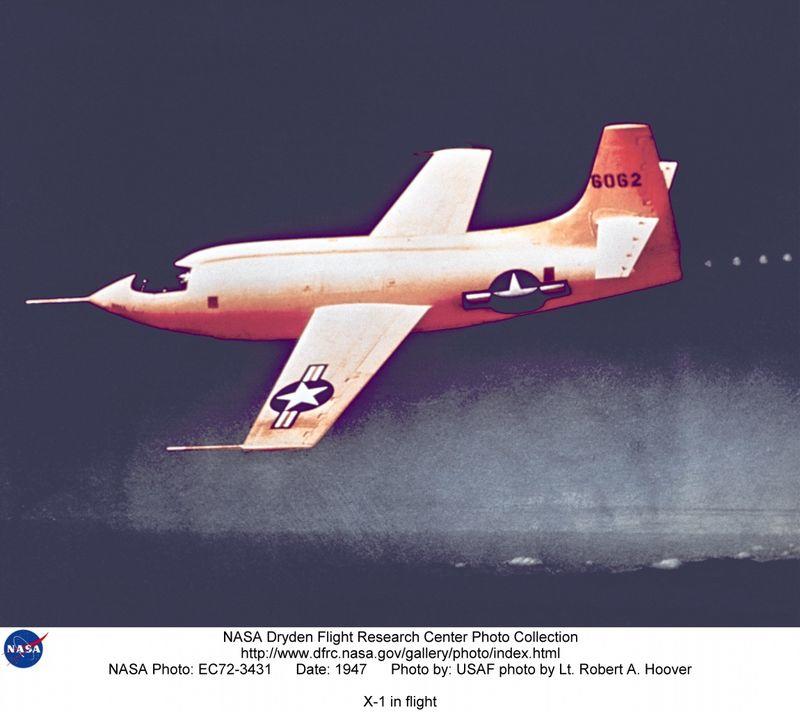THE RIGHT STUFF / L’ETOFFE des HEROS

Photo: NASA
Captain Charles « Chuck » YEAGER broke the sound barrier with the help of his friend Jack RIDLEY on a 14th of October 1947 – He did it 71 years ago!

(U. S. Air Force illustration/Mike Carabajal)

Photo: NASA

Photo: U.S.Air Force Link
XLR-11 ROCKET POWERED AIRCRAFT
Birth of Manned Rocket Research Airplanes: 1946 to 1975
The first reliable, effective rocket engine that would provide boost for experimental research aircraft was produced by four members of the American Rocket Society (ARS) who combined forces to form Reaction Motors Incorporated (RMI) (Rockaway, New Jersey) for developing the Experimental Liquid Rocket (XLR-11) rocket motor. The XLR-11 engine had four separate rocket chambers. Each chamber provided 1500 lb of rated thrust and could be operated independently as a means of throttling thrust in quarters, up to 6000 pounds. The XLR-11 possessed remarkable longevity, powering an impressive fleet of rocket aircraft for more than a quarter of a century (1946 to 1975). This fleet of vehicles were the first rocket aircraft devoted solely to high performance experimental flight research. They were not constrained by military or commercial demands and ranged from being the first to break the sound barrier (XS-1), to the first to reach Mach 2.0 (D-558-II [fig. 5]), to the first to exceed the X-2 Mach 3.2 record (X-15 with two XLR-11 engines).

Figure 5. The D-558-II airplane on Rogers lakebed.
The X-1E – Early Development of Energy Management
Design efforts to extend aircraft performance produced increased wing loadings, W/S, and decreased lift-to-drag ratios, L/D. These design changes were beneficial in reducing drag to achieve supersonic and hypersonic speeds, but were also detrimental in that they reduced the area of the maneuvering footprint and presented difficulties in the approach and landing.
As L/D values decreased, the glide slope angle and the rate of descent increased, making it more difficult for pilots to estimate distances and times required for acceptable landings. The X-1E (fig. 6) was modified with a low-aspect-ratio wing having a thickness-to-chord ratio of four percent – the only aircraft of the X-1/D-558 series to have sufficiently low L/D values to require unique energy management techniques. This X-1E was the first to experiment with approach patterns designed to give
the pilot more time in the traffic pattern to manage energy.
The landing pattern was approached in a conventional manner except that altitudes and speeds were somewhat higher than for
powered aircraft. The initial reference point was established at 12,000 ft (mean sea level) on a downwind heading (180 deg remaining to turn). The downwind leg was offset some four miles from the centerline of the landing runway. On downwind, abeam the touchdown point, landing gear and partial flaps were deployed at a speed of 240 knots. Full flaps were usually deployed on the final approach. At the initial reference point the pilot had almost three minutes until touchdown – additional time for handling increased speeds and sink rates.7,8
Figure 6. The X-1E airplane on Rogers lakebed.

Report from www.archives.gov
(Text from the NASA at: http://www.nasa.gov/centers/dryden/home/index.html)
